
Lenny Pitt has opened another quirky door for me –
It meets every month in the cottage behind Leonard Pitt’s home in North Berkeley. You perhaps remember my post on Pitt from late 2015, in which we visited the cottage in question. And more recently Pitt took me to meet and see the perfume world of Mandy Aftel.

Lenny Pitt has been a regular Pied Piper for me.


Pitt’s back cottage is a perfect set and setting for controlled chocolate use by a chocolate club, no?
Pitt founded the Berkeley Chocolate Club in 2003, says the website, “out of a taste for chocolate and the pleasure of socializing around something that is pure fun.”

Pitt was in the habit of buying Lindt chocolate at the recently departed Cambodian-owned grocery store on the southwest corner of Shattuck and Vine. Walking home one day, he visited David and Carrie Olson, who also had a bar of good chocolate. They tried sharing and comparing the two bars.
Gloria Polanski was there at the conception: “Somehow Lenny found out I like chocolate. He and Carrie had some kind of dispute about chocolate brands and decided to settle it with a comparative tasting. Lenny invited me without giving me Carrie’s address. As a realtor I easily found the address and showed up for the tasting. When I got there everyone was hiding under the table. Apparently they made bets on whether or not I would find the address! The tasting was so enjoyable that we decided to meet monthly in Lenny’s cottage. “
Turning to my preferred King James Bible, Matthew 18:20, “For where two or three are gathered together in My name, I am there in the midst of them.” A club was formed.
The club has a code of ethics. I don’t know if all the people saw the thunderings, and the lightnings, and the noise of the trumpet, and the mountain smoking when the Code of Ethics was handed down as had been the case with the Ten Commandments, but here they be:

I cannot tell you the degree to which the code is tongue in cheek but knowing Pitt I’d bet high.
The club celebrated its 10th anniversary in 2013.
The club describes the event: “To celebrate we all gathered at The Ames Gallery in Berkeley for a spectacular evening put on by gallery owners Sy and Bonnie Grossman. Anyone living in the Bay Area who doesn’t know The Ames Gallery is like someone living in Paris who does not know Notre Dame. * * * Along with a number of invited guests we were 25 in all to meet at the gallery for a grand feast of food and a good time beyond all measure.”

Pitt was honored at the dinner. “Our club founder, President and Grand Poobah Leonard was presented with a crown, two impressive Pope rings as they are known, and a decorative gold necklace.”

For the record, “Grand Poobah” is a term derived from the name of the haughty character Pooh-Bah in Gilbert and Sullivan’s The Mikado (1885). The name has come to be used as a mocking title for someone self-important or locally high-ranking and who either exhibits an inflated self-regard or who has limited authority while taking impressive titles.

I can report two things. First and sadly, the Ames Gallery where the dinner was held closed at the end of 2015. I published a post about Sebastapol artist Art Moura and his outsider art, but the Ames escaped my attention. Dang. L There is always the Outsider Art Fair, in Paris later this year and New Yok in 2021,
Second, the coronation and attention lavished upon Pitt in 2013 did not change him He is still the same person. He didn’t let the crown go to his head. Still, though, when I see him, I hear a choir with orchestra singing Jerusalem and imagine that I am in Westminster Abbey.

The Chocolate Club meeting that John Storey and I attended began as every meeting begins, with Leonard Pitt ringing a bell.

The ringing of the bell makes me think of my boy years in the Episcopal church, with the altar bell or sanctus bell, typically a small hand-held bell or set of bells used to create a joyful noise to the Lord as a way to give thanks for the miracle taking place atop the altar.[ The ringing signifies the Real Presence of Christ in the sacred Elements. During the Eucharist, it is usually rung three times – once before the Words of Institution*, and once at each elevation of the Host and of the Chalice. It may also be rung to indicate the time that the faithful may come forward to receive Communion.
With that, the chocolate tasting begins. The club only tastes dark chocolate .
The Food and Drug Administration does not have a standard of identity for dark chocolate as a type of chocolate. However, to be marketed as dark chocolate, a product must meet FDA’s policy for nonstandardized foods bearing the term “chocolate”:
” The label of a nonstandardized food which bears no artificial chocolate flavor or natural flavor derived from a source other than cacao beans may bear the term “chocolate” (in contrast to “chocolate flavor”) provided the product meets one of the following conditions: The product bears as its only source of chocolate flavoring an ingredient that complies with one of the standards of identity for cacao products found in 21 CFR 163.111; 163.123; 163.130; 163.135; 163.140; or 163.145. In addition, products which comply with 21 CFR 163.153 or 163.155 may bear the term “chocolate” followed by the specific name of the vegetable oil used. The product is flavored with cocoa and the food is one that consumers have long recognized as containing cocoa as the characterizing chocolate flavoring ingredient and is one that consumers do not expect to contain a chocolate ingredient.”
Dark chocolate contains cocoa solids, cocoa butter and sugar, without the milk found in milk chocolate. Milk chocolate need not apply at the Berkeley Chocolate Club.

There are six different chocolates. to be tasted tonight. A sip of water between chocolates is designed to cleanse the palate.
Tonight, most of the chocolates to be tasted are in the 80% chocolate range. Most commonly, the club tastes chocolates in the 70% range. As a frame of reference, a milk chocolate candy bar is approximately 40% chocolate. Which brings up an important point – the chocalatiers don’t consider the chocolate that they are trying to be candy – it is an artisanal food creation.


Whoever brings the chocolate announces it. Gloria Polanski: “I tend to be the one who brings it because we travel a lot. Carrie’s job is to unwrap, break, and pass the chocolate and to tabulate the scores.”
We learn a bit about the first chocolate that we are going to try. As Gloria opens the chocolate, she tells us about the chocolate and the shop in Paris where she bought it. This is 82% chocolate made with a Venezuelan bean in Burgundy.

The maker of this chocolate is French, Henri Le Roux.
The chocolate is broken into pieces.

The pieces are placed on a wooden board that is passed around the table.
As the chocolate is passed, I think of the Words of Institution, a eucharistic prayer of Jesus’ institution of the eucharist at the Last Supper, based on 1 Corinthians 11:23-26 , found in the Episcopal service of holy communion: “For in the night in which he was betrayed, he took bread; and when he had given thanks, he broke it, and gave it to his disciples, saying, Take, eat, this is my Body, which is given for you. Do this in remembrance of me. “

Gloria Polanski brought tonight’s chocolates, which she bought in Paris and St. Augustine, Florida. Gloria came to Berkeley to attend Cal and stayed. She has three children and two grandchildren. She is a former member of the Board of the Northeast Berkeley Neighborhood Association. Gloria was a longtime Trustee of Ecole Bilingue, The East Bay French American School, and continues to be an active member of The Alumni Committee. She is a charter member of the Berkeley Chocolate Club.
She says this of her chocolate journey “As a child in post WWII Germany, I associated chocolate with the American GI’s, who were our liberators and benefactors. My Polish mother made us chocolate sandwiches: bread, butter, and chocolate. Years later when I lived on a houseboat in Amsterdam I discovered the Dutch breakfast of bread and butter with chocolate sprinkles on top. In later years every special occasion was accompanied by a box of See’s. And of course for every birthday, chocolate cake.”


Each club member announces their impression of the chocolate and rates it on a scale of 0 to 10. The rule of thumb is that a rating of 5 means that you would eat this chocolate while watching a movie.

This James Thurber cartoon from 1944 first appeared in the New Yorker. It finds humor in the specialized language of wine tasting. The words used to describe the chocolate are similarly amusing. My favorites of the evening are “disciplined” and “medicinal.” “Medicinal” was mine, so it is probably not fair game. I did not know when I blurted out “medicinal” that it is a term often used in beer tasting. Some people say phenols have a medicinal taste. A phenol is an aromatic organic compound with the molecular formula of

It is a white crystalline solid that is volatile. The molecule consists of a phenyl group bonded to a hydroxy group. Mildly acidic, it requires careful handling because it can cause chemical burnsSome yeasts produce them naturally and a low level of them is acceptable in certain styles (weizens). But in homebrew it can come from chlorophenols, which are not a good thing.
Descriptors used by the Chocolate Club tasters that struck me –
“… it is not connecting… I can’t get rid of the tartness … unpleasant … I’m phobic about bananas and this tastes like loads of them … cloying … I taste clashing swords … grainy … a weak structure … shallow taste … thin and empty … it’s the chocolate equivalent of the Man in the Gray Flannel Suit …. globby like lamb fat … malty … grainy … interesting but not interesting enough…”
I don’t know if the Man in the Gray Flannel Suit reference was to the 1955 book by Sloan Wilson or the 1956 movie starring Gregory Peck.
Berkeley being Berkeley, a chocolate that is organic or fair trade wins points before the tasting begins. Fair trade is an institutional arrangement designed to help producers in developing countries achieve better trading conditions. Members of the fair trade movement advocate the payment of higher prices to exporters, as well as improved social and environmental standards.


When the club learns that one of the chocolate-makers uses vanillin in the place of vanilla, you know that this chocolate is in trouble with this bunch.

Vanillin is an organic compound, a phenolic aldehyde (derivative of phenol). In the image above, two-way and three-way data analysis methods, multivariate curve resolution-alternating squares (MCR-ALS) and parallel factor analysis (PARAFAC) were applied to the potential-frequency dataset to estimate the pKa value of vanillin.
The use of an artificial ingredient costs the chocolate points even before it is tasted.
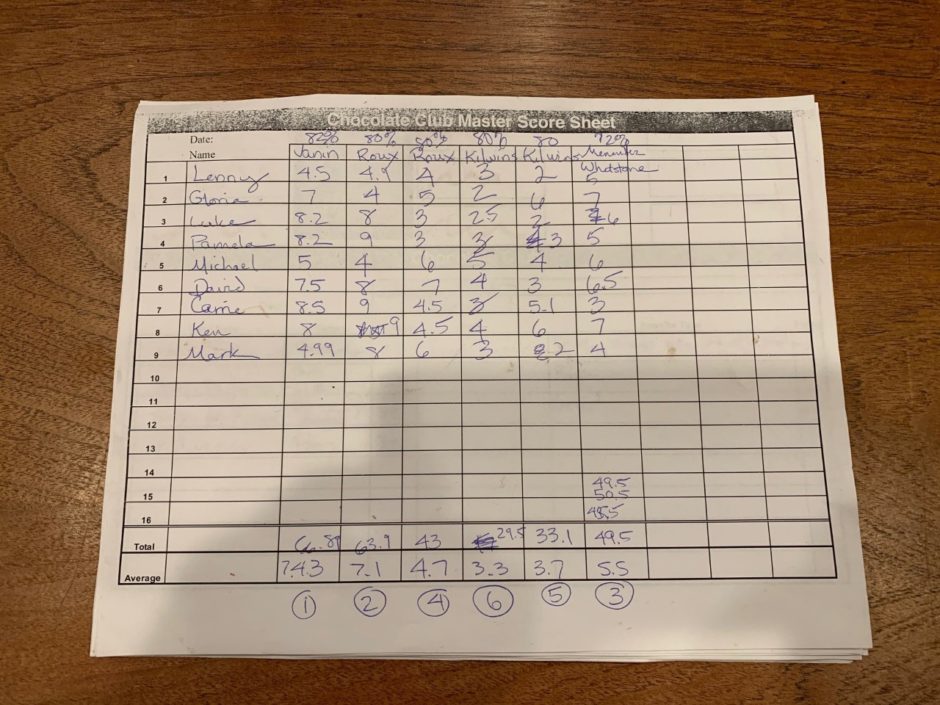
At the end of the tasting, the nine members’ scores for the six chocolates are averaged, the overall ranks are determined, and the night’s winner is announced. Tonight the first chocolate ranked first. It had the highest percentage of chocolate and this group likes high percentages of chocolate.
I ask about the worst chocolate they ever tasted.

They are unanimous – a Russian aerrated chocolate was the worst. Aerrated chocolate is turned into a foam by means of the addition of gas bubbles. The process was invented by Rowntree’s, a British confectionery business based in York, England.in 1947. During manufacturing the fluid chocolate mass is foamed with a propellant, and then cooled in a low pressure environment

Aeration allows chocolate products to have a low weight in relation to volume, thereby reducing the calories in a portion.

The club members agreed that it had tasted like a blend of sheetrock and dirty socks – their words, not mine.
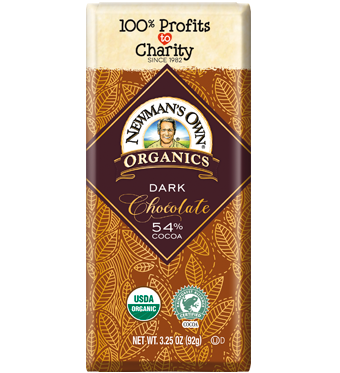
The second worst? Newman’s Own with its added soybean oil. Newman’s Own claims “Our chocolate bars and cups made from carefully selected organic cocoa beans and other fine ingredients result in richer flavors and a creamy, smooth texture. ” Their dark chocolate appears to have a chocolate content of only 54%. Who do they think they are fooling?
I don’t want to give the impression that the members of the chocolate club are complete chocolate snobs. Yes, they know a lot about the history of chocolate.
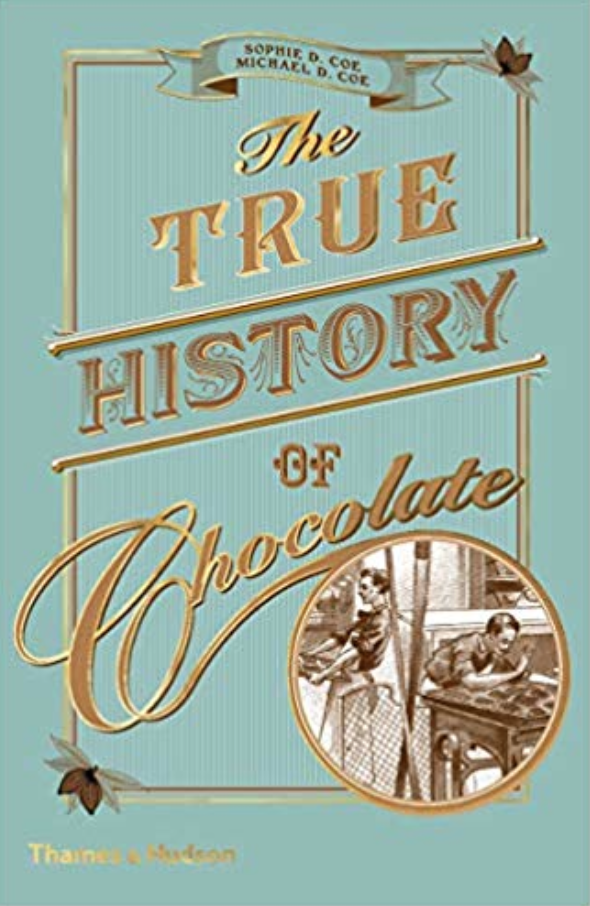
They all know that chocolate comes from the Aztec word xocolatl which means bitter water.

The tropical tree from which cocoa and chocolate originate is called Theobroma which translates to “food of the gods”. And so on.
Yes, they love good chocolate. But that does not mean that they don’t like an occasional milk chocolate candy bar – they do. And they don’t insist on precious little chocolate shoppes.
Please note my use of the spelling “shoppe.” “Shoppe” is a deliberately archaic spelling of “shop,” used in the hopes of imbuing a store with old-fashioned charm or quaintness.


My first encounter with the “shoppe” spelling was the Hot Shoppe on Lancaster Avenue in Bryn Mawr, circa 1966. I was still a picky eater. I wouldn’t touch anything by the fries.

The Hot Shoppe chain was launched by J. Willard “Bill” Marriott in 1927, catering to many government workers. Before the Hot Shoppes, Bill Marriott owned an A and W Root Beer franchise. He sold the root beer at “five cents for a frosty mug.” The last Hot Shoppe closed in 1999.

BACK TO CHOCOLATE and the not-complete snobs chain – Lenny Pitt is perfectly happy with a 72% dark chocolate bar from Trader Joe’s.
At the end of the evening, I join in a group photo that Pitt takes after every meeting.

The group occasionally takes field trips. With the club’s inherent sense of humor and irony, a field trip might be called an extraplenary session.
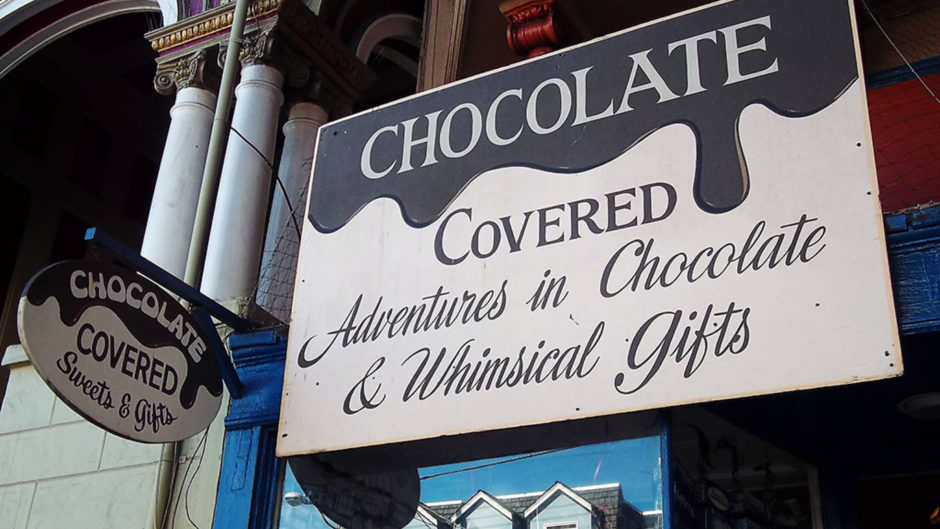
There is talk of visiting Chocolate Covered on 24th Street in San Francisco.

Thousands of varieties of chocolate are for sale. I asked that Quirky Berkeley be given notice of any trip to Chocolate Covered, that Quirky Berkeley be allowed to come, and that Quirky Berkeley be allowed to bring daughter Julia. Assurances were given. I wanna go!
The meeting didn’t drag on. Good humor and a love of chocolate defined the mood. There was reverence for chocolate, yes, but also cleverness.

The sacred–profane dichotomy is an idea posited by French sociologist Émile Durkheim.

Sacred and Profane.
Routledge, a publisher near and dear to my heart, teaches us: “The sacred refers to those collective representations that are set apart from society, or that which transcends the humdrum of everyday life. The profane, on the other hand, is everything else, all those mundane things like our jobs, our bills, and our rush hour commute. Religion is the practice of marking off and maintaining distance between these two realms.”
The chocolate club is a perfect combination of the sacred and the profane. They love their high-end gourmet dark chocolate (the sacred), but they do so with a sense of humor and strong old Berkeley values (the profane).
I left Pitt’s little French castle cottage into a foggy Berkeley winter night, better for having spent time with the chocolate lovers.
I showed the photos of the Chocolate Club meeting to my friend. He started going through the draft post and said, “All of the chocolate products that we eat are derived from cacao seeds, which are derived from the cacao plant that grows in South America and West Africa. Cacao seeds grow in large pods on the trunks of these trees. If I remember, you crushed big-time on the novels of Jorge Amado with their cacao plantations.”
Yes, my friend remembers this correctly. There was a time when the novels of the Brazilian Jorge Amado were for me all that fiction could be.


I don’t remember what my exact path was to Amado.


In March 1972 I first read One Hundred Years of Solitude (Cien Años de Soledad) by the Columbian Gabriel García Márquez. Lisa Mei Lee gave the book to me when I visited her in San Francisco on my way to the Imperial Valley to cut asparagus for reasons that defy understanding today.
I can’t say how many times I have read the first line of the book, so powerful is it to me. “Many years later, as he faced the firing squad, Colonel Aureliano Buendía was to remember that distant afternoon when his father took him to discover ice.” In Spanish – “Muchos años después, frente al pelotón de fusilamiento, el coronel Aureliano Buendía había de recordar aquella tarde remota en que su padre lo llevó a conocer el hielo.”
That, my friends, is right up there with Melville’s first line in Moby Dick: “Call me Ishmael.” Which comes back at us in Kurt Vonnegut’s Cat’s Cradle, which I read on a foolish drive from Colorado to California and back on Thanksgiving weekend, 1969: ““Call me Jonas. My parents did, or nearly did. They called me John.” From a few years earlier in my life, the first (two) line (s) of Fitzgerald’s Great Gatsby: “‘In my younger and more vulnerable years my father gave me some advice that I’ve been turning over in my mind ever since. Whenever you feel like criticizing anyone, he told me, just remember that all the people in this world haven’t had the advantages that you’ve had.” Or J. D; Salinger’s in Catcher in the Rye: “If you really want to hear about it, the first thing you’ll probably want to know is where I was born, and what my lousy childhood was like, and how my parents were occupied and all before they had me, and all that David Copperfield kind of crap, but I don’t feel like going into it, if you want to know the truth
And there is the first line of Joseph Heller’s Catch 22: It was love at first sight. The first time Yossarian saw the chaplain, he fell madly in love with him.” Or Twain’s in The Adventures of Huckleberry Finn: ““You don’t know about me, without you have read a book by the name of The Adventures of Tom Sawyer, but that ain’t no matter.” Or – last one I promise, Robert Louis Stevenson in Treasure Island: “Squire Trelawnay, Dr Livesey, and the rest of these gentlemen having asked me to write down the whole particulars about Treasure Island, from the beginning to the end, keeping nothing back but the bearings of the island, and that only because there is still treasure not yet lifted, I take up my pen in the year of grace 17– and go back to the time when my father kept the Admiral Benbow inn and the brown old seaman with the sabre cut first took up his lodging under our roof.”

Anyway, the thing is, what I really mean – Marquez was my first taste of magical realism and I have never looked back Magical realism (aka magic realism, fabulism, or marvelous realism) originated in Latin America by writers ofttraveled between their home country and European cultural centers where they were influenced by the art movement of the time. A literary work of magical realism depicts a realistic view of the modern world while also adding magical elements of fables, myths, and allegory
A few years later I discovered Jorge Amado. I chased down and over the years bought and read every book of his published in English.

Amado’s early novels were centered around the cacao plantations of the state of Bahia, Brazil, and they reflected his leftist politics.

Amado knew the misery and the struggles of the people working the land and living in almost slave conditions
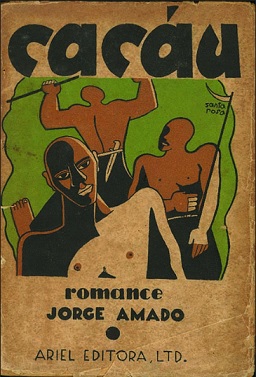
In 1954, Amado quit politics and one year later left the Communist Party. He dedicated himself solely to literature. Strong women became his main characters, and he surrendered to the glory of a magical realism that drew on Afro-Brazilian rituals and folklore, local deities, and the mystics of Bahia.

The magical realism and Amado’s portrayal of the port city Cidade do São Salvador da Bahia de Todos os Santos and the women had a power over me that I can still feel.

In 1981, I saw Dona Flor the movie at the Castro Theater. The movie is based on Amado’s best-known novel.

Sônia Braga stars as Dona Flor. I was entirely captivated.

For a long time, I had the ambition of learning enough Portuguese to read Amado in the original. In 2011, I told this to the late Sally Woodward, who was an important mentor of mine. She told me in no uncertain terms (scold!) that learning Portuguese would be a Waste of Time, that instead I should write about myself and what I know, that I should engage in creative narcissism. So I lost my desire for learning Portuguese. Oh well – here I am with no Portuguese under my belt.
My goodness this has been a ramble. A detour, aside, deflection, divergence, diversion, excursion wandering, an ober dictum (a judge’s incidental expression of opinion, not essential to the decision and not establishing precedent).
I looked over at my friend and could swear that he had been dozing off. Can’t blame him. He pretended to be awake and alert, though, when I asked him what he thought of my Chocolate Club post?
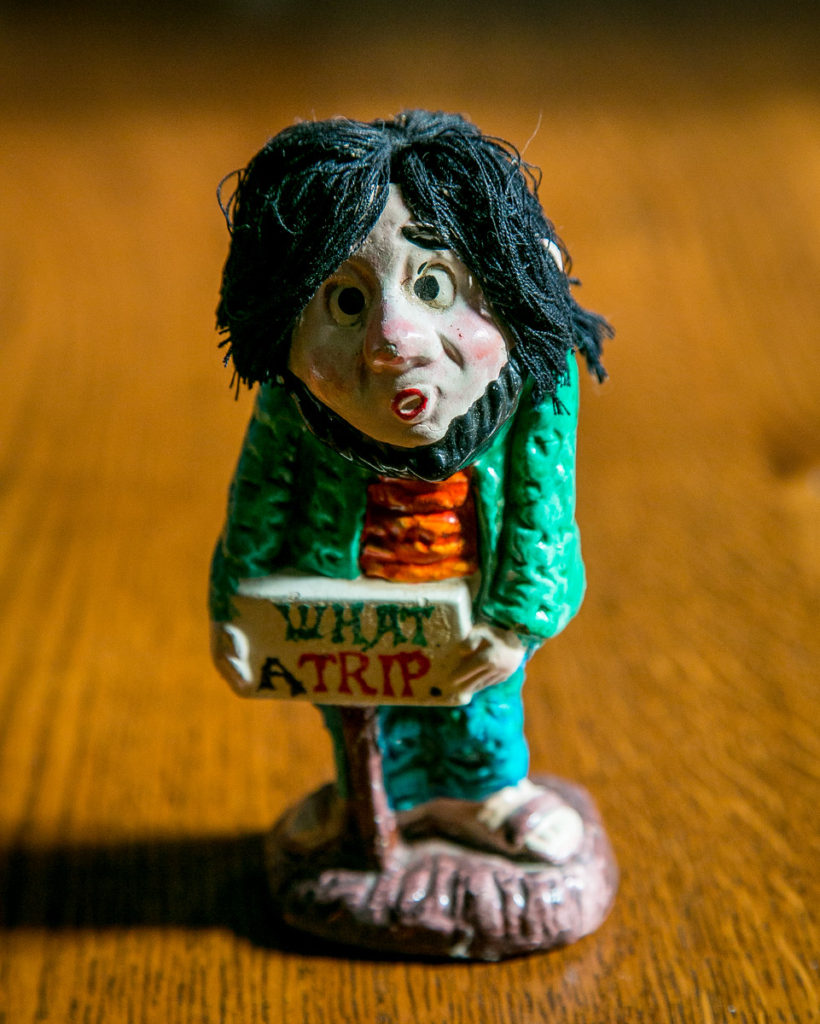

Footnote: Regarding the Words of Institution, from the An Episcopal Dictionary of the Church: “Narration in a eucharistic prayer of Jesus’ institution of the eucharist at the Last Supper, based on 1 Cor 11:23-26 (see Mt 26:26-29; Mk 14:22-25; Lk 22:14-20). The wording of the institution narrative varies slightly in different eucharistic prayers. The institution narrative states that Jesus gave thanks to God, broke the bread, gave it to his disciples, and said the words of institution concerning the bread, “Take eat: This is my Body, which is given for you. Do this for the remembrance of me” (BCP, p. 362). The institution narrative likewise states that after supper Jesus took the cup of wine, gave thanks, shared the cup with his disciples, and said the words of institution concerning the wine, “Drink this, all of you: This is my Blood of the new Covenant, which is shed for you and for many for the forgiveness of sins. Whenever you drink it, do this for the remembrance of me” (BCP, p. 363). Jesus’ words of institution identify the eucharistic bread and wine with his body and blood, and direct his followers to continue this sharing in remembrance of him. Jesus’ words thus “instituted” the eucharist, and the eucharistic narration of this event is the institution narrative.
“The words of institution are the same in all Rite 2 eucharistic prayers, and appear in a somewhat different form in Rite 1. The BCP directs that the celebrant is to hold the bread, or lay a hand upon it, at the words concerning the bread. At the words concerning the cup, the celebrant is to hold the cup, or place a hand on it, and any other vessel containing wine to be consecrated (BCP, p. 362). Institution narratives also include brief statements of context concerning the institution of the eucharist at the Last Supper. Prayer A states that the Last Supper was on the night Jesus was handed over to suffering and death (BCP, p. 362); Prayer B states that it was on the night before he died for us (BCP, p. 368); Prayer C and the Rite 1 prayers state that it was on the night he was betrayed (BCP, pp. 334, 342, 371); and Prayer D states that when the hour had come for Jesus to be glorified by God the Father, Jesus loved his own who were in the world, and loved them to the end (BCP, p. 374).
“An institution narrative was included in the third-century eucharistic prayer of Hippolytus’s Apostolic Tradition. Institution narratives were regularly included in eucharistic prayers after the fourth century. The medieval church came to understand the words of institution as the “moment of consecration” of the eucharist, instead of the warrant or basis for the entire eucharistic rite. This emphasis on the words of institution came to be expressed through dramatic elevations of the elements and the ringing of bells. Sacramental theology has once again emphasized the consecration in terms of the entire prayer of eucharistic thanksgiving. However, a vestige of the medieval emphasis on the words of institution can be found in a form for consecrating additional bread or wine at the eucharist. This form combines a brief invocation of the Holy Spirit and a short version of the appropriate words of institution (BCP, p. 408).”



Hi Tom
I enjoyed this ramble, love chocolate and magical realism. I happen and am happy to be rereading Love in the Time of Cholera right now (who isn’t?).
I was hoping I could ask you a slang question. I saw you quoted in the NYT profile of the dictionary expert who has sadly passed away. Is there an email where I could directly contact you? If not, I can email again via this form with my question.
Thanks much
Ann Marsh
Pasadena, CA